Every time Apple releases new products, it will attract a wave of technology.
This time, AR will undoubtedly become the biggest explosion.
As early as this year's WWDC conference in June, Apple officially announced the introduction of the AR development platform ARkit in iOS 11. With ARKit, developers can easily bring augmented reality to third-party apps.
This time, AR was pushed to a higher position. The iPhone 8, iPhone 8 Plus, and iPhone X built top hardware and software platforms for AR applications, especially the iPhone X with a dedicated A11 chip for a neural network computing processor, with TrueDepth cameras. The system and the sensor can let the facial expression image have more emotional characteristics by tracking the facial expression movement of the user and using the Animoji3D expression kit.
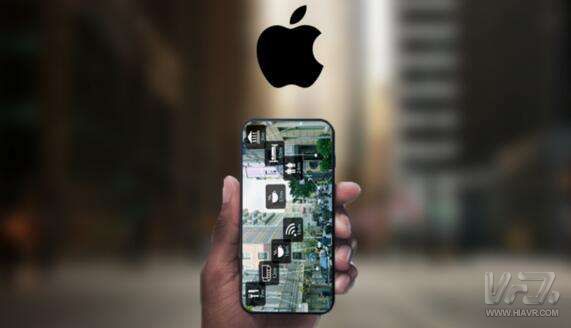
In fact, Apple CEO Tim Cook has repeatedly expressed interest in AR on different occasions. Marked by this conference, Apple has stepped into the AR world and AR has entered the best era. There are three specific reasons.
I. Rapid popularity of host systems such as smartphones supporting AR
Different from the VR that is not required to be supported by a single device, the AR can directly obtain the experience through a host system such as a smart phone, a PC or a video game machine (a host system refers to a device that provides various function guarantees for the HMD).
Take smart phones as an example. On the ios side, ARKit currently supports devices with Apple A9 or higher, which means that iPhone 6s and above have been supported. Under preliminary estimates, the global market for mobile phones with iPhone 6s and above has exceeded 300 million. This is from Apple. External sales data can be verified. For example, according to the IDC report, in the second quarter of 2017, Apple’s shipments to the global mobile phone market were 41 million (mostly more than 6s models), ranking second. In the first quarter of 2017, sales of Apple's iPhone 7 and iPhone 7 Plus were 21.5 million and 17.4 million, respectively, and Apple’s flagship product, iPhone, was sold in the fourth quarter of 2016 in the first fiscal quarter of 2017. 78.29 million units, which represents an increase of 4.7% compared to the same period of last year. Since the iphone6s series was launched in September 2015 and is now entering the eighth quarter, it has a minimum amount of 40 million units and a total of 320 million units.
In the Android camp, ARCore corresponds to ARCore. At present, ARCore already supports high-end models of Google and Samsung, such as Pixel, Pixel XL, and S8 and S8+. It is said that Google is working with Huawei, Samsung, LG, Asus and other mainstream vendors. According to Google’s goal is to launch ARCore 1.0 this winter, allowing 100 million people to grab Android phones to play Augmented Reality.
Some industry speculations that 30% of users' mobile phones will have AR capabilities in September next year and will reach 50% or even higher in two years time. The popularity of these AR support devices will directly accelerate the penetration of AR as a new phenomenon-level consumer portal. In everyday life.
Second, the demonstration effect of Apple, etc., will cause development frenzy
In fact, Apple has established a professional team on AR and acquired related patents and layouts for seven years.
Since the release of ARKit, in just a few months, various types of applications have emerged. The ARKit framework provides two AR technologies, one is based on 3D scene (SceneKit) to achieve augmented reality, the other is based on 2D scene (SpriktKit) to achieve the augmented reality, which is more conducive to developers around the ARKit development corresponding The product.
In addition, following Apple’s launch of ARKit, Google quickly launched ARCore, and Google is also developing the Visual Positioning Service (VPS), a service that will create a world-class AR experience unmatched on the desktop.
Facebook also owns the Camera Effects Platform, and developers have added augmented reality to their applications.
Apple, Google and others play a good role in demonstration. Some mobile phone manufacturers or self-developed algorithms, or docking with them, such as Huawei, Asus, LG, etc. will include AR capabilities on this year's and next year's flagship mobile phones.
Of course, the domestic application of eco-industry is not idle, and is also closely related to the development of AR-related products. Nowadays, all major applications have included AR-related products, such as AR scan codes, and human faces. Interactions, LBS positioning, etc., everyone began to gradually accept this type of interaction between virtual reality.
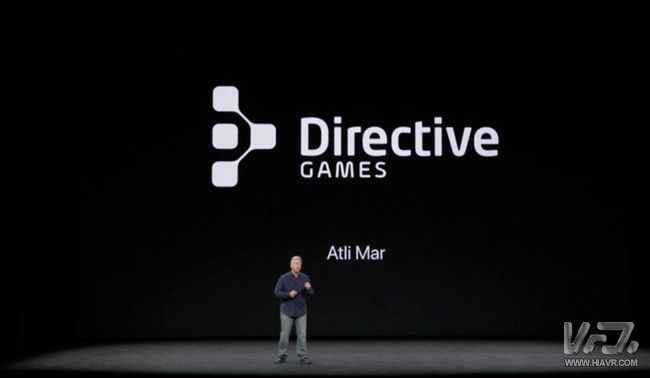
Third, compared to VR, AR has an unrivaled advantage
We know that because of the relationship between hardware and content, it will take a while for VR to fully explode, and VR will allow users to fully immerse themselves in the computer-generated virtual world. AR will add computer-generated images and digital information to the real world. Above, this AR has a relatively large advantage, such as:
1, the application scenario is more extensive. VR is a virtual world, and it is bound to compete with existing entertainment media such as movie theaters, games, or Netflix. AR is an assistant, a social and expressive medium that enhances and facilitates users' work and life in the real world. Especially in the social aspect, AR does not separate the user from the real world. It focuses on the interaction with the surrounding people, including the eyes and looks of each other. You can make video calls, process documents, present content, and play games with your friends while you see the real world.
2, gameplay, AR is more suitable for smart phones. AR allows people to interact with the real world in new ways, such as driving navigation, games and AR social and photo sharing. The popular AR game Pokemon GO is a good example.
3, AR industry currently has no absolute advantage, no one in theory. In VR, Facebook, Samsung, Sony and other vendors have already run ahead. Even if Apple enters the game, it also lags behind them. On the whole, AR does not currently have one vendor that occupies an absolutely dominant position.
Coupled with the relevant industry chain behind the AR field, the composition of the underlying platforms and technologies, hardware, content, and industry applications is gradually evolving, as mentioned by Chen Zhaoxing, CEO of automotive digital retail service provider Autoforce, in an interview. "AR had already been applied many years ago, but it has been in a very awkward position due to the underlying technology is not mature, the application scenario is not clear, and the digital consumption habits have not yet formed. Nowadays, with the rise of digital consumption and electronic payment, In addition, Apple's comprehensive upgrade of AR's underlying technologies has made AR applications more friendly and convenient, and at the same time, ARkit is bringing its iPhone 8\X to the market, and nearly 1 billion iPhone users worldwide It will become a potential AR use group. This phenomenon-level consumption portal is a prerequisite for the success of AR retail.†The conditions are basically mature, and AR is about to become a new phenomenon-level consumption portal.
Retail consumption will be the first wave of beneficiaries of AR bonusesAccording to a recent digital retail report released by Goldman Sachs, video games, live events, video entertainment, healthcare, real estate, retail, education, engineering, and military are listed as the top 9 areas for VR/AR applications, but Bell believes that The retail industry will be the first wave of beneficiaries of the AR bonus.
First, let's talk about why it is a retail scene
1, away from the money, easier commercialization
From the perspective of cost-effectiveness, AR technology costs are not high. A complete set of VR devices is close to 100,000, while a simple AR device requires only a cell phone. Moreover, the threshold of AR technology research and development is low. For example, the AR company Blippbuilder has issued an AR design platform. Even users without coding experience can create AR technology on it.
Secondly, in life applications, because of its strong realism and small modeling workload, AR is easier to integrate with traditional business practices. For example, in industrial training and equipment maintenance, we can enable employees to use existing equipment and tools. Next, through the augmented reality technology, the training guidance information is visualized in real time.
Again, in the moment, users are more tolerant of AR retail, and we all try to experience AR fitting and try to pick cars. Because their cost is relatively low, they do not need to buy equipment like VR.
More importantly, these are usually paid by business owners. With competitive business opportunities so fierce, they dare to lag behind to try AR.
2. There is a huge "improved" demand in the retail industry
For example, clothing, electricity suppliers, we choose clothes on the Internet, often buy back to fit or don't look good. The beauty is also, just do not know if they will look good after changing.
The automotive industry is even worse. The traditional sales model is mainly based on the “traditional means†of slash-and-burn, and the marketing and sales costs are not low, but the conversion rate from marketing to sales is extremely low, seldom can bring effective rallies to the store, and the distributors suffer. Words. Secondly, they have been affected by new-type auto companies. For example, new energy vehicles such as Tesla and Weilai are only selling cars online. The showroom is only used to display the brand concept and place 1-2 flagship models. Although abroad, Mercedes-Benz, Audi, Cadillac, and Hyundai are all developing digital retail. Their envisioned future dealerships will be smaller and smaller, and even without a car in the store, all pre-sales experience will be online, completed by digitization, and finally returned to the offline test drive before delivery. (The general trend here is that as the automobile consumption becomes more and more mature, the demand for test drive is also slowly weakening. As a standardized industrial consumer product, the car's consumption trend will gradually approach the mobile phone as a kind of " Quasi-quick consumer goods, and this is the inevitable in the context of consumer upgrades and digital payments. And now both car manufacturers and distributors are looking forward to better digital marketing solutions.
3, Apple and other companies intentionally inclined
It is these areas that the giants are making the most of their efforts. For example, in early 2016, Apple acquired Flyby Media, an AR company that researches indoor positioning and navigation, autonomous drone navigation, driverless cars, and head-mounted display system tracking. In October 2016, it was reported that Apple is testing AR-based car navigation and autopilot software.
In comparison, at this conference, Apple focused on demonstrating the AR application of IKEA APP.
This will undoubtedly provide a clear signal to industry practitioners. Other practitioners will inevitably not follow the trend and place bets on retail sales.
Second, which retail scene will be the first to enjoy the bonus
1, online shopping: beauty makeup, clothing
Previously in Alibaba's "Sweet Cat" campaign, according to statistics "Tmall" was scanned a total of 1.6 billion times, of which AR out to the limelight.
Everyone abroad is chasing after you to hug and embrace AR. For example, in 2016 Magic Leap displayed a demo on AR online shopping, from measuring space, purchasing, previewing and placing orders all under AR environment.
Lowe's, an American home building chain retailer, provides customers with a Tango-enabled mobile phone. The special APP inside the mobile phone can help customers navigate their products.
Nike has experimented with AR devices developed by SmartPixels to help users customize sports shoes.
Blue Mercury’s flagship store in New York’s Sixth Avenue will also introduce AR equipment.
For another example, Sephora has introduced many stores with AR facilities around the world. Customers only need to stand on the virtual makeup mirror Tap and Try to scan the barcode of the product to see their makeup effect on the screen. According to the survey agency, the sales of Sephora stores using “mirror mirror†increased by an average of 31%. And AR directly improved the buyback rate and return rate.
In addition, Estee Lauder, L'Oréal, and Sephora, the French beauty retail giant, have also entered the beauty fashion +AR. For example, L'Oréal Group has announced that it will cooperate with AR Beauty App APP “Play Beauty Makeup†to allow users to experience L'Oréal makeup items. Estee Lauder also introduced AR-based trials on its website.
2. Family Improvement: Furniture, Home Furnishings
Whether it is the ARkit release or the launch of the iphone x, IKEA is one of the absolute protagonists. Through ARKit's AR technology, consumers can implement virtual furnishings on their mobile phones, and they can also purchase furniture directly through the application.
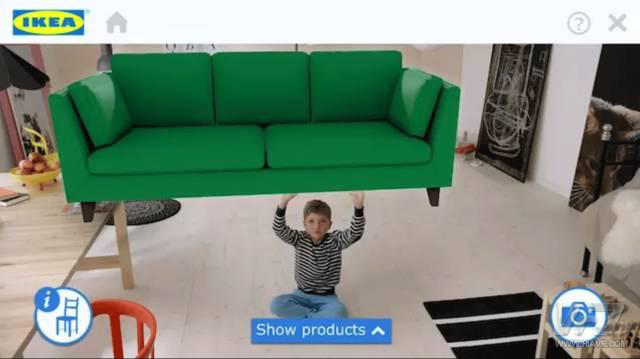
In fact, as early as 2013, IKEA launched an interactive product catalog where users can see the furniture in their own home by opening the camera.
There is also a "real home" shopping guide app called "AR Home" in China. This APP is combined with AR hardware and mobile hardware to enable users to access home warehouses at any time and select their favorite home (tables, sofas, curtains, etc.). Chairs, etc.) are placed in any home and can accurately measure the actual size of the home, and the degree of reduction is close to 100%.
3, the automotive industry
According to media exposure data, developers previously used the developer preview version of ARKit in iOS 11 to create an automotive AR experience. It is a detailed Mercedes-Benz 3D rendering model with an interactive interior space that can also change different colors for the car. The car model can be held unstably on the ground, allowing the user to virtually walk around and view different angles.
The domestic automotive OEMs Changan, FAW, Guangzhou Automobile and other companies are in-depth cooperation with the car potential technology, the latter as a "car digital retail service providers", the use of a variety of popular visual technology for digital car presentation, to help car manufacturers Strengthen the pre-sales product experience and marry the pre-sales experience to its own back-end DMS platform to help sales consultants in the dealership store collect real-time clues for clues, such as the overall customer’s preference when looking at the car in the content end. Personalized data can be fed back to distributors in real time, helping sales consultants to be able to understand consumers’ car purchase preferences and personal preferences for the first time and immediately follow up with sales. It is also the first domestic technology service provider to use ARkit to build the Lamborghini AR Showroom.
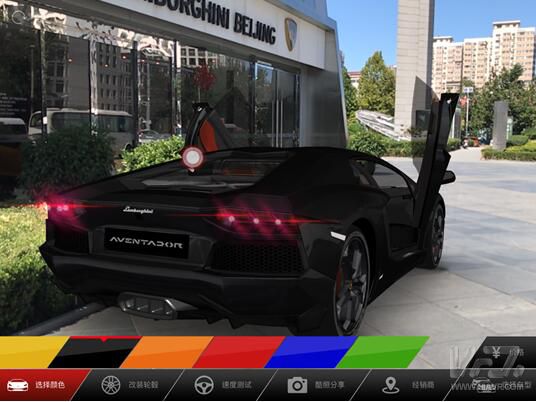
Currently, Volkswagen manufacturers use their own developed VR application platform: innoactive. It is said that they will gradually apply AR technology to future training. In addition, last year at the Guangzhou Auto Show Guangzhou Automobile Exhibition Co., Ltd., the car home also launched the AR watch service.
However, some people may have doubts about these consumption scenarios. However, the question is: The house is heavier than the car. Currently, selling a house at a chain can help a buyer to make a decision (know, choose, The price communication is all in a small shop, and the most specific room to see is to go outside to see). The car is more standardized and lighter than the house, which will inevitably lead to the upgrading of sales methods. The AR-centered digital sales solution is undoubtedly an intriguing fall direction.
Before the full-scale outbreak, don't forget to make up for these shortcomingsHowever, before the full popularity of retail AR, there are still some systemic weaknesses that need to be completed. such as:
First, the infrastructure of the AR underlying system needs to be accelerated
If AR retails on a large-scale outbreak, the precondition is that application developers will enter AR application development on a large scale. This poses a great challenge to Apple and Google (and even Facebook). They need to build a set of solutions. Corresponding AR platforms and development kits, and they need to speed up the construction of the underlying system infrastructure.
Second, everyone is looking forward to more powerful sensors and chips
Currently on mobile phones, we have been able to achieve 3D modeling, machine learning applications and coherent rendering effects, but they usually consume a lot of CPU/GPU resources, which leads to increased device temperature and rapid battery consumption. If you want to move these functions to AR equipment, custom sensors and chips are the best solution (such as Microsoft's holographic chip), but I am afraid we need everyone to wait.
Third, in the improvement of user interaction and the expansion of industry scenes, the need to speed up the progress
Let's talk about interaction first. This includes real-time interaction between people and content. For example, when choosing clothes, the degree of fit between people and clothing, as well as the inter-device interaction between people, needs to be completed in the virtual space based on the content of people and people. Real-time interaction. This is a major challenge for technical computing capabilities and data transmission. Currently, a long line behind various AR devices is a transmission limitation. If you want to remove the cable, the current technology means WiFi can not afford such a large data volume. If you want to wait until LiFi matures, at least until 2020.
Secondly, at present, most AR presentations and applications are still monologues. There is still a gap between the real "seeing gains" and "enhancement of immersive experiences." As Jeremy Bergstein of Science Project stated, "VR and AR shopping are still insufficient. The same feeling that allows you to experience the true try on clothes is not enough to make you judge whether the clothes fit together or not.†This situation also applies to the AR+ beauty model. At present, most of the AR's makeup tests on the market are designed for lipsticks, eye shadows, blushers, and other cosmetics. Consumers' experience can only be limited to the overall effect of color on the skin, and they can't feel the durability, product texture, Skin feel and other real effects. Of course, AR technology can not help consumers complete the use and selection of daily skin care products.
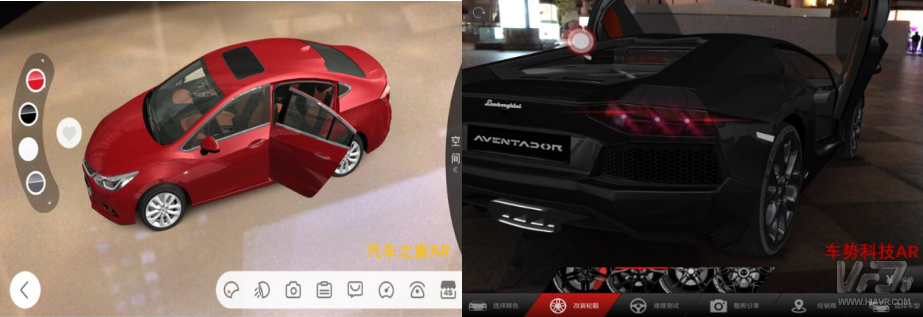
In terms of the penetration of the scene, a very important determinant is whether the company is willing to use AR; this depends on whether AR can change its existing problems and increase sales. They are not for charity but for profit. For example, in the automotive industry, whether auto makers can fully promote AR depends on whether AR can strengthen the emotional connection between consumers and autos and continue to bring in new potential customers; whether it can help auto brands and their distributors achieve accurate consumer arrivals. And complete sales conversions. The traditional car sales model makes the camp highly separated from the sales, so whether it is the car home AR car or the car potential AR digital retail showroom, is to let the car factory and the dealer realize the camp and the sale together. Its core advantage is not a simple AR experience, but on the one hand it provides consumers with a high-quality, convenient look-a-car experience, on the other hand, it optimizes the quality of service for manufacturers and distributors and improves sales conversions! If the relevant service providers provide solutions The plan only uses the content features of AR to improve the user experience, but it does not help car manufacturers and distributors to increase the number of shoppers and precise sales leads. It can only be a temporary carnival.
In short, AR retail will be a new industry revolution, but before the outbreak, all participants need to really understand retail, but also be able to control the core capabilities and reduce costs. This test is not only the precipitation of technology, but also more. Understanding of each retail format, especially the understanding of the conversion between the client and client.
400 puffs disposable vape pen are so convenient, portable, and small volume, you just need to take them
out of your pocket and take a puff, feel the cloud of smoke, and the fragrance of fruit surrounding you. It's so great.
We are China's leading manufacturer and supplier of disposable vape puff bars, 400 puff disposable vape,400 puffs vape and smoke,
400 puffs vape kit,400 puffs e-cigarette, and e-cigarette kit, and we specialize in Disposable Vapes, e-cigarette vape pens, e-cigarette kits, etc.
400 puff disposable vape,400 puffs vape and smoke,400 puffs vape kit,vape pen 400 puffs,400 puffs e-cigarette
Ningbo Autrends International Trade Co.,Ltd. , https://www.mosvape.com